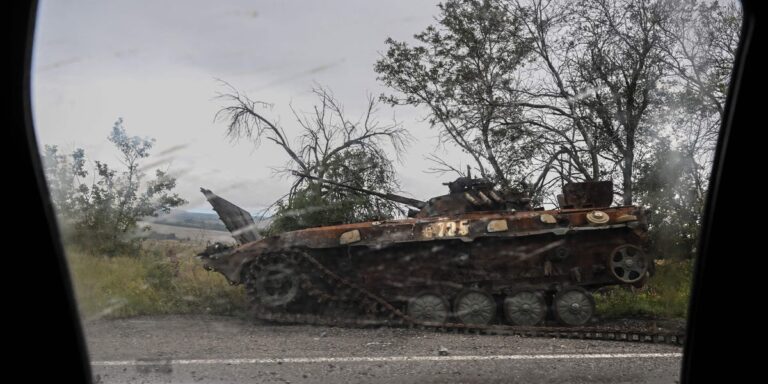- Russian forces are repurposing old infantry fighting vehicles by converting them into makeshift artillery guns.
- Improvised weapons are likely to be inaccurate, jumping a few inches off the ground when fired.
- The move comes as Russia continues to struggle to supply weapons to its forces.
Russian forces appear to be making improvised artillery guns from the main armament of older BMP-1 armored fighting vehicles.
A video circulating on social media shows a soldier firing what appears to be a 73mm 2A28 Grom cannon from a BMP-1 mounted on a makeshift wheelbase. Another video shows a group of soldiers pulling the improvised cannon into position.
The crude device may reflect the heavy equipment losses Russia suffered during its invasion of Ukraine.
The General Staff of the Ukrainian Armed Forces said on Sunday that Russia had lost 14,937 artillery systems and 15,645 armored combat vehicles since the launch of the full-scale invasion in February 2022.
Even though Russia is still more than capable of building new artillery systems and renovating Soviet-era weaponry, it will be difficult to keep up with the pace of losses and the firepower required on the front lines.
And while the improvised 2A28 artillery gun may serve as a temporary solution to dwindling supplies, it is very likely to be inaccurate.
A video shows the device, designed to be fired from a stable armoured turret, jumping off the ground with each shot.
The unarmored gun will also be extremely exposed to Ukrainian drone attacks, which have proven effective against Russian heavy tanks.
This is not the first time that Russian forces appear to have resorted to makeshift devices.
In March, videos appeared to show Russian troops using vulnerable golf cart-style vehicles to transport infantry to the front lines.
In April, another video appeared to show a Ukrainian strike on a Russian tank that was using an “improvised electronic warfare system,” Rob Lee, a senior policy fellow at the Foreign Policy Research Institute, wrote on X at the time.
Lee said the system “would have effectively countered a large number of FPVs operating with different frequencies before it was shut down.”
Russia has also deployed “turtle tanks” with crude metal roofs in the past to defend against incoming munitions such as drone attacks.
“I know people are laughing at this, but I don’t think it’s a crazy adaptation,” Lee wrote in another post on X.
“The Russians are adapting to the specific conditions of the battlefield, where Ukraine has a lot of FPVs, but not enough ATGMs, anti-tank mines and artillery,” he said. “So it makes sense to sacrifice observation and the ability to rotate a tank’s turret by platoon, which can jam several FPV frequencies at once.”


